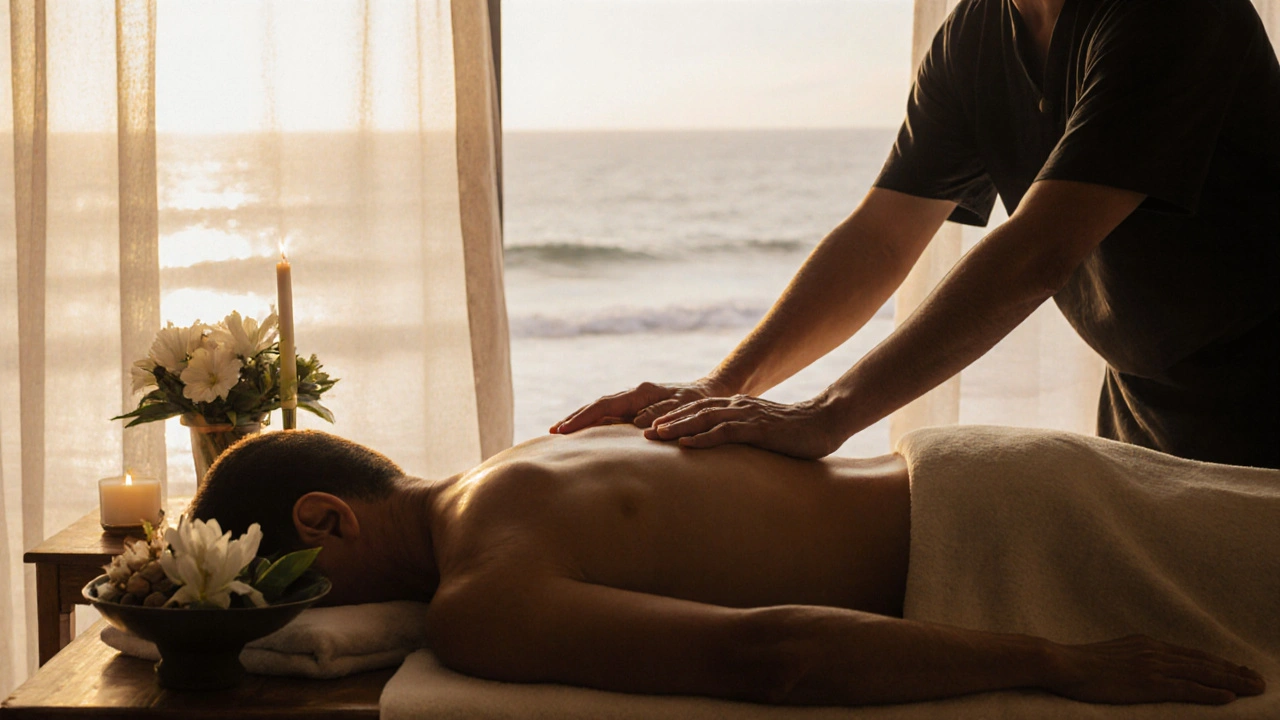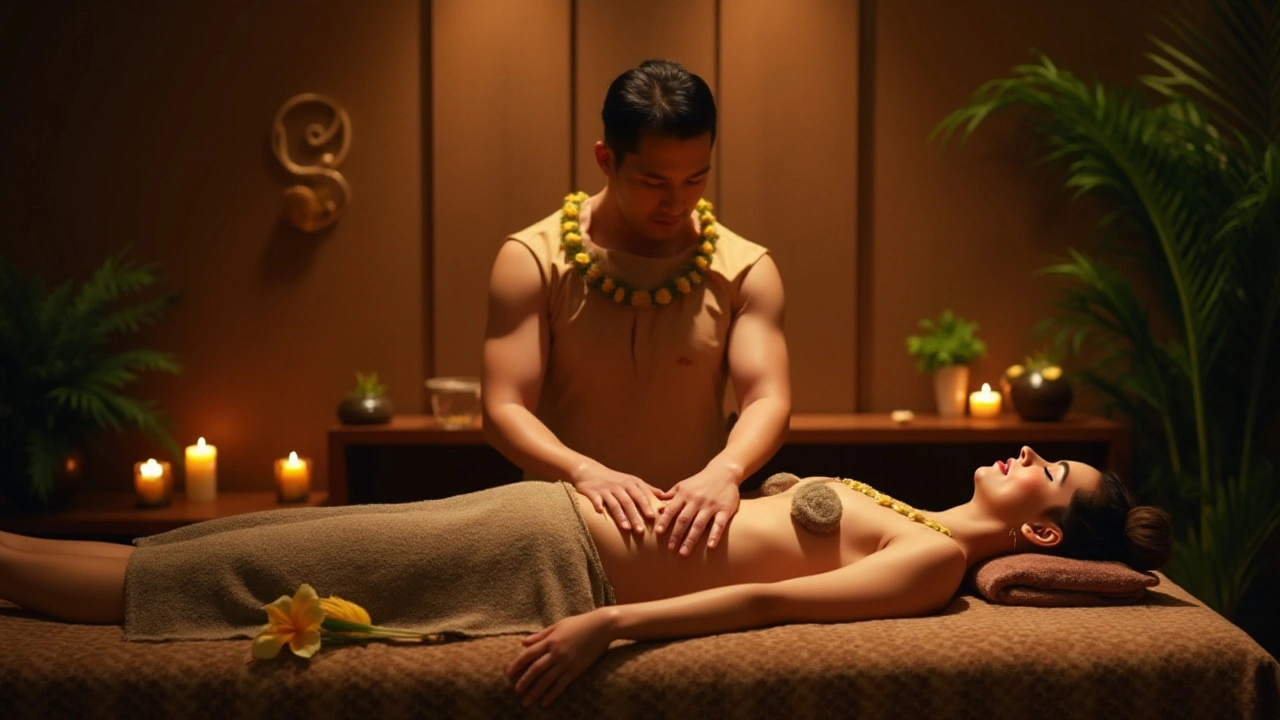Hawaiian Massage (Lomi Lomi) for Dogs: Calm, Circulation, Mobility
Hawaiian massage, often called Lomi Lomi, uses long flowing strokes and rhythmic movement to create deep relaxation. On dogs it’s gentle, wave-like touch that encourages blood flow, eases muscle tension, and helps anxious pups settle. This guide gives clear, practical steps you can try at home and safety tips so you don’t accidentally make things worse.
How Hawaiian Massage Helps Dogs
Lomi Lomi focuses on broad, continuous strokes rather than short, hard pressure. For dogs that means less poking and more comfort: the steady motion calms the nervous system, helps lymph drainage, and can reduce stiffness after play or a long walk. Many owners notice a looser gait and softer breathing after a short session. If your dog has sore hips or tight shoulders from activity, these flowing strokes can help release tension without triggering pain.
Traditional Hawaiian healers, called kahuna, used this style as part of whole-body care. We adapt that idea for pets: attention to rhythm, warmth, and a calm environment. It’s about presence, not pressure.
How to Try a Short Lomi Lomi Session on Your Dog
Start slow. Sit or kneel at your dog’s level in a quiet room. Use warm hands—cold hands feel strange on a relaxed dog. Spend the first minute just petting and watching how your dog breathes and moves. If your dog leans in or softens the eyes, you’re on the right track.
Use the flats of your palms and forearms for long, sweeping strokes from neck to tail. Work both sides in a continuous motion, like a gentle tide. Keep pressure light to medium—enough to move skin and superficial muscle but not to press into deep pain. Aim for 5–10 minutes at first.
Target common tight spots: base of the neck, shoulders, and hips. For each area, glide in long passes rather than rapid rubs. If your dog has thick fur, keep strokes slower so the skin moves under your hands rather than just the coat. Watch the tail and ear position—relaxed tail, lip licks, and soft blinking are good signs. If the dog stiffens, tucks the tail, growls, or tries to move away, stop and check with a vet before trying again.
Be cautious with any medical issues. Don’t use Lomi Lomi on open wounds, recent surgical sites, suspected fractures, or when blood clotting problems exist. For older dogs with cancer, heart problems, or severe arthritis, check with your vet first. If in doubt, book a session with a certified canine massage therapist so you can learn the right pressure and strokes for your dog’s needs.
Want to go deeper? Read our piece on “Kahuna Explained” to learn more about Hawaiian healing roots, and check other massage guides on this site for styles like Ayurvedic or neuromuscular approaches. Keep sessions short and positive, add treats or a favorite toy, and you’ll likely turn massage time into one of your dog’s favorite rituals.
Quick checklist: warm hands, calm space, long flowing strokes, 5–10 minutes, stop if the dog shows stress, consult your vet for health concerns. Small, regular sessions beat rare long ones—consistency builds trust and real benefits.

Lomi Lomi: The Ancient Hawaiian Healing Art That Restores Body and Spirit
Lomi lomi is an ancient Hawaiian healing massage that uses flowing strokes, sacred oils, and spiritual intention to release emotional and physical tension. More than just bodywork, it’s a tradition that reconnects you to your breath, your ancestors, and the rhythm of nature.

Discovering the Healing Power of Lomi Lomi Massage
Explore the profound benefits of Lomi Lomi massage, a traditional Hawaiian technique aimed at promoting spiritual healing and well-being. Learn how this unique form of massage therapy can provide not just physical relief but also emotional and spiritual balance.

Healthy Diet Essentials for a Vibrant Life
Sep, 26 2025



